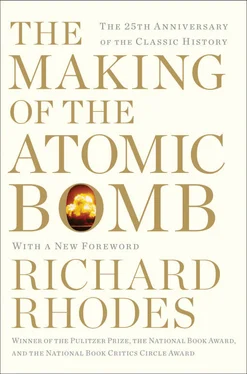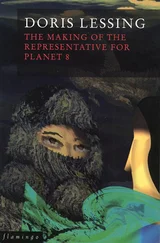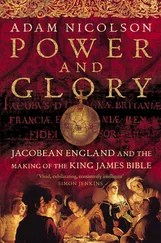But the death machine had only sampled a vast new source of raw material: the civilians behind the lines. It had not yet evolved equipment efficient to process them, only big guns and clumsy biplane bombers. It had not yet evolved the necessary rationale that old people and women and children are combatants equally with armed and uniformed young men. That is why, despite its sickening squalor and brutality, the Great War looks so innocent to modern eyes.
The first subway on the European continent was dug not in Paris or Berlin but in Budapest. Two miles long, completed in 1896, it connected the thriving Hungarian capital with its northwestern suburbs. During the same year the rebuilding of the grand palace of Franz Josef I, in one of his Dual-Monarchial manifestations King of Hungary, enlarged that structure to 860 rooms. Across the wide Danube rose a grandiose parliament, its dimensions measured in acres, six stories of Victorian mansard-roofed masonry bristling with Neo-Gothic pinnacles set around an elongated Renaissance dome braced by flying buttresses. The palace in hilly, quiet Buda confronted the parliament eastward in flat, bustling Pest. “Horse-drawn droshkies,” Hungarian physicist Theodor von Kármán remembers of that time, carried “silk-gowned women and their Hussar counts in red uniforms and furred hats through the ancient war-scarred hills of Buda.” 382But “such sights hid deeper social currents,” von Kármán adds.
From the hills of Buda you could look far beyond Pest onto the great Hungarian plain, the Carpathian Basin enclosed 250 miles to the east by the bow of the Carpathian Mountains that the Magyars had crossed to found Hungary a thousand years before. Pest expanded within rings of boulevards on the Viennese model, its offices busy with banking, brokering, lucrative trade in grain, fruit, wine, beef, leather, timber and industrial proauction only lately established in a country where more than 96 percent of the population had lived in settlements of fewer than 20,000 persons as recently as fifty years before. Budapest, combining Buda, Óbuda and Pest, had grown faster than any other city on the Continent in those fifty years, rising from seventeenth to eighth in rank—almost a million souls. Now coffeehouses, “the fountain of illicit trading, adultery, puns, gossip and poetry,” a Hungarian journalist thought, “the meeting places for the intellectuals and those opposed to oppression,” enlivened the boulevards; parks and squares sponsored a cavalry of equestrian bronzes; and peasants visiting for the first time the Queen City of the Danube gawked suspiciously at blocks of mansions as fine as any in Europe. 383
Economic take-off, the late introduction of a nation rich in agricultural resources to the organizing mechanisms of capitalism and industrialization, was responsible for Hungary’s boom. The operators of those mechanisms, by virtue of their superior ambition and energy but also by default, were Jews, who represented about 5 percent of the Hungarian population in 1910. The stubbornly rural and militaristic Magyar nobility had managed to keep 33 percent of the Hungarian people illiterate as late as 1918 and wanted nothing of vulgar commerce except its fruits. 384As a result, by 1904 Jewish families owned 37.5 percent of Hungary’s arable land; by 1910, although Jews comprised only 0.1 percent of agricultural laborers and 7.3 percent of industrial workers, they counted 50.6 percent of Hungary’s lawyers, 53 percent of its commercial businessmen, 59.9 percent of its doctors and 80 percent of its financiers. 385, 386The only other significant middle class in Hungary was a vast bureaucracy of impoverished Hungarian gentry that came to vie with the Jewish bourgeoisie for political power. Caught between predominantly Jewish socialists and radicals on one side and the entrenched bureaucracy on the other, both sides hostile, the Jewish commercial elite allied itself for survival with the old nobility and the monarchy; one measure of that conservative alliance was the dramatic increase in the early twentieth century of ennobled Jews.
George de Hevesy’s prosperous maternal grandfather, S. V. Schossberger, became in 1863 the first unconverted Jew ennobled since the Middle Ages, and in 1895 de Hevesy’s entire family was ennobled. 387Max Neumann, the banker father of the brilliant mathematician John von Neumann, was elevated in 1913. Von Kármán’s father’s case was exceptional. Mór Kármán, the founder of the celebrated Minta school, was an educator rather than a wealthy businessman. In the last decades of the nineteenth century he reorganized the haphazard Hungarian school system along German lines, to its great improvement—and not incidentally wrested control of education from the religious institutions that dominated it and passed that control to the state. That won him a position at court and the duty of planning the education of a young archduke, the Emperor’s cousin. As a result, writes von Kármán:
One day in August 1907, Franz Joseph called him to the Palace, and said he wished to reward him for his fine job. He offered to make my father an Excellency. 388
My father bowed slightly and said: “Imperial Majesty, I am very flattered. But I would prefer something which I could hand down to my children.”
The Emperor nodded his agreement and ordained that my father be given a place in the hereditary nobility. To receive a predicate of nobility, my father had to be landed. Fortunately he owned a small vineyard near Budapest, so the Emperor bestowed upon him the predicate “von Szolloskislak” (small grape). I have shortened it to von, for even to me, a Hungarian, the full title is almost unpronounceable.
Jewish family ennoblements in the hundred years prior to 1900 totaled 126; in the short decade and a half between 1900 and the outbreak of the Great War the insecure conservative alliance bartered 220 more. 389Some thousands of men in these 346 families were ultimately involved. They were thus brought into political connection, their power of independent action siphoned away.
Out of the prospering but vulnerable Hungarian Jewish middle class came no fewer than seven of the twentieth century’s most exceptional scientists: in order of birth, Theodor von Kármán, George de Hevesy, Michael Polanyi, Leo Szilard, Eugene Wigner, John von Neumann and Edward Teller. All seven left Hungary as young men; all seven proved unusually versatile as well as talented and made major contributions to science and technology; two among them, de Hevesy and Wigner, eventually won Nobel Prizes.
The mystery of such a concentration of ability from so remote and provincial a place has fascinated the community of science. Recalling that “galaxy of brilliant Hungarian expatriates,” Otto Frisch remembers that his friend Fritz Houtermans, a theoretical physicist, proposed the popular theory that “these people were really visitors from Mars; for them, he said, it was difficult to speak without an accent that would give them away and therefore they chose to pretend to be Hungarians whose inability to speak any language without accent is well known; except Hungarian, and [these] brilliant men all lived elsewhere.” 390That was amusing to colleagues and flattering to the Hungarians, who liked the patina of mystery that romanticized their pasts. The truth is harsher: the Hungarians came to live elsewhere because lack of scientific opportunity and increasing and finally violent anti-Semitism drove them away. They took the lessons they learned in Hungary with them into the world.
They all began with talent, variously displayed and remembered. Von Kármán at six stunned his parents’ party guests by quickly multiplying sixfigure numbers in his head. 391Von Neumann at six joked with his father in classical Greek and had a truly photographic memory: he could recite entire chapters of books he had read. 392Edward Teller, like Einstein before him, was exceptionally late in learning—or choosing—to talk. 393His grandfather warned his parents that he might be retarded, but when Teller finally spoke, at three, he spoke in complete sentences.
Читать дальше












